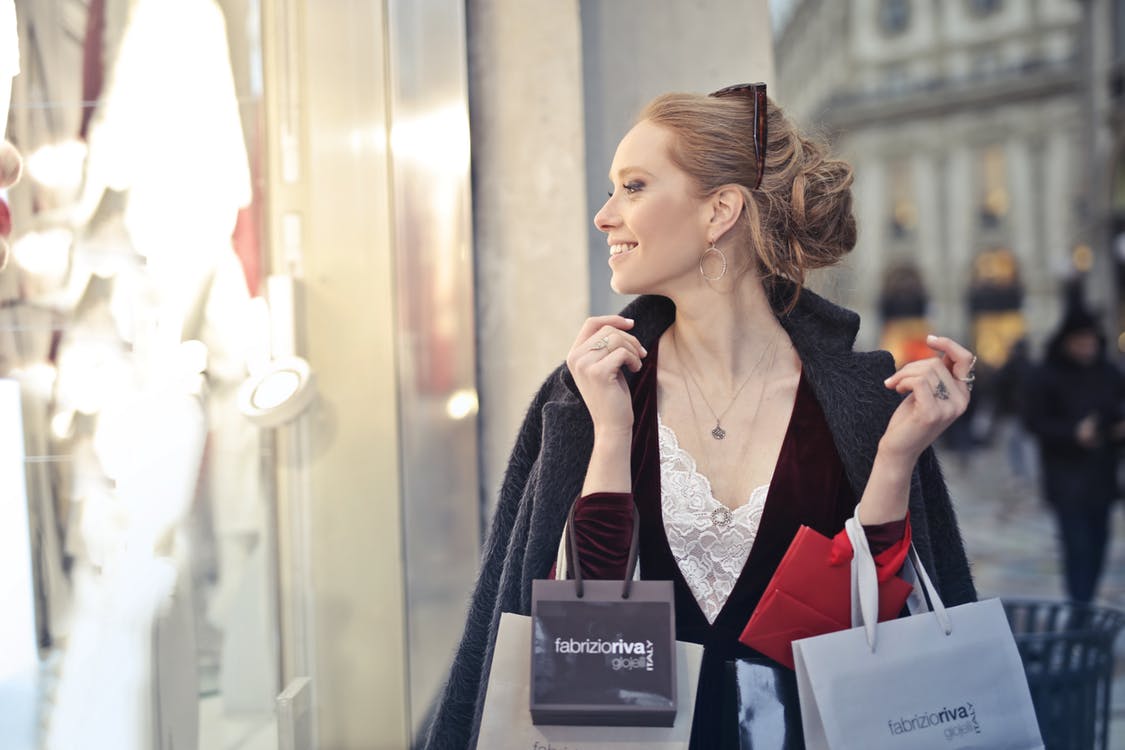Providing your customers with a great shopping experience isn’t enough in today’s retail landscape. Retailers are faced with the opposing threat from online retailers providing an experience that is accessible and convenient. Online shoppers are faced with product recommendations from the offset, rather than waiting for a sales assistant to tell you what they would recommend. So how can the high street compete?
A solution that retailers online cannot provide is a human to human experience, rather than Business to Consumer experience. Shoppers are looking at the overall experience and look at stores that can improve their overall well-being, rather than their need to go shopping.
A number of leading UK department stores are investing in their in-store experience as a unique selling point. The focus on experiential retailing is a huge trend within the sector that has shaped a lot of department store innovation. Debenhams have recently invested in their store of tomorrow, with the recent refit of their Watford store. Where the refit does seem pricey, especially in the midst of uncertainty for Debenhams, it is hard to argue that the new store refit gives the consumer what they want… an experience that is easy and accessible without the stress of looking for products. As retailers continue to plough investment into the development of their stores, it is crucial for retailers to have a clear understanding of what shoppers want when they step foot into the store. Mintel found in a recent survey that 35% of consumers said that they shopped with a department store because of the experience they received in store as a whole, rather than just the shopping experience. This is something that consumers favour when shopping on the high street as they are looking for an overall experience rather than just a shopping experience.
When surveyed by Mintel, almost half of consumers (47%) said in-store product displays are the most important type of point of sale display when shopping in-store. For department stores creating visually inspiring and aspirational retail window displays and other point of sale marketing campaigns should take priorit. As stores invest in consumer experiences out of the norm, they should take into consideration their current offerings and how they can improve these services to be noticed by the consumer when shopping in-store. Using a FSDU or a retail window display that promotes your in-store experiences can capture the attention of those passing by and make them want to explore your services in-store, ultimately converting new customers.
Luxury department store Harrods offer a toy concierge service. The concierge service is dedicated to sourcing the world’s most exclusive toys, Harrod's engaging and dynamic team of professional toy stylists compile wish lists for children in order to find the right product for all ages, as well as commission extra special bespoke toys! Through providing an experience like this will elevate the shopping experience to a bespoke experience personalised to the shopper providing an unforgettable shopping venture. As discussed in one of our previous articles discussing the importance of targeting children to influence their parents spending, a service like this is a great example of what an extra ordinary experience is.
https://youtu.be/f-1leA1unHU
The increasing number of retailers and department stores investing in blurring the lines of shopping and leisure is creating retail destinations that are sought after, especially with consumers who look to do something more meaningful with their spare time. Providing a service within a store where the consumer can sit back and relax, like they would do in a hair salon confirms that these types of opportunities are growing and becoming a more meaningful experience.
The question is, how do you transform your consumer’s shopping experience into a one like no other?
 Add a service layer to your offering, whether you are a retailer, or a homeware offer a level of service that elevates the consumer’s experience. Offering a service like a repair service if the consumer purchases a product will entice customers come back into store knowing they are getting a service they wouldn’t get at another retailer and can create additional customers to shop at your store through word of mouth. Fenwicks department store festive campaign in collaboration with Barbour offers kids and parents to meet Santa on the rooftop along with wrapping up in Barbour coats and scarves.
Create a community – new products, in-store displays, demos and workshops are great things to do and will increase sales and footfall. But the number one thing that will keep regulars coming back is a community. Provide a human 2 human experience where consumers can interact with people on a humanly level. In-store or digital, using both can benefit and create something solely unique. A lot of beauty and department stores hold special sales for members, such as Fenwick’s 10% - 20% secret sale for members, or Bicester Village’s VIP club. Creating a community like experience makes the consumer feel as if they belong to something much bigger than a shopping experience.
Add a service layer to your offering, whether you are a retailer, or a homeware offer a level of service that elevates the consumer’s experience. Offering a service like a repair service if the consumer purchases a product will entice customers come back into store knowing they are getting a service they wouldn’t get at another retailer and can create additional customers to shop at your store through word of mouth. Fenwicks department store festive campaign in collaboration with Barbour offers kids and parents to meet Santa on the rooftop along with wrapping up in Barbour coats and scarves.
Create a community – new products, in-store displays, demos and workshops are great things to do and will increase sales and footfall. But the number one thing that will keep regulars coming back is a community. Provide a human 2 human experience where consumers can interact with people on a humanly level. In-store or digital, using both can benefit and create something solely unique. A lot of beauty and department stores hold special sales for members, such as Fenwick’s 10% - 20% secret sale for members, or Bicester Village’s VIP club. Creating a community like experience makes the consumer feel as if they belong to something much bigger than a shopping experience.
Connect physical and digital experiences
The customer journey is no longer linear or simple, but it is fluid and jumps from one marketing channel to another. Brands should create seamless experiences that connect touch points between desktop, mobile and in-store. Creating unforgettable experiences across the platforms. How can you accomplish this? By putting yourself in the consumer’s shoes through the entire process. As you put together your 360-campaign, ask yourself these questions: - How does your target consumer decide on the product and how do they research it? Which channels do they use? - Where do they make most of their purchases, and using what? Do they do it in-store, online? Do they use a desktop or a mobile? - What type of point of sale marketing does your customers best react to? Are they wowed by creative and impactful retail window displays, or do they enjoy researching and understanding the product and like to interact with a free standing display unit (FSDU)? - How can you create a journey that can be picked up where it was left off through a persistent customer profile connected to previous purchases and engagement? It’s important to consider the necessity of having a mobile centric website design so that consumers can instantly research your products online if they need be. Using interactive touch points on your POS marketing materials can engage the consumer and allow them to seek additional expert knowledge on your website.Adjust your message proposition, how do you master the art of attribution?
When implementing an in-store marketing campaign into your store, you need to understand how your efforts contribute to your target consumer’s purchasing decisions. Which channels are the most influential and what messages resonates as the strongest. How do you succeed in attribution? There’s no answer that is quick and painless, however retail marketers can implement a unique strategy based on consumer data and purchasing habits collected over the past year. What is important is how to apply the strategy to generate a stronger bond between product ranges that you carry, both online and in-store.Improving the in-store experience
Seamlessly connecting the digital experience with brick-and-mortar visits is critical to a successful in-store experiences. Improving your in-store experience starts with your store’s sales associates. Make sure you equip your team with expert knowledge about your products and brand in order to provide consumers. Invest in training to keep their knowledge of current practices and trends up to date, this will be monumental in providing the best experience for your customer as your work force will feel inspired to achieve a greater amount of sales and will take pride in preaching your brands message and ethos. Add a service layer to your offering, whether you are a retailer, or a homeware offer a level of service that elevates the consumer’s experience. Offering a service like a repair service if the consumer purchases a product will entice customers come back into store knowing they are getting a service they wouldn’t get at another retailer and can create additional customers to shop at your store through word of mouth. Fenwicks department store festive campaign in collaboration with Barbour offers kids and parents to meet Santa on the rooftop along with wrapping up in Barbour coats and scarves.
Create a community – new products, in-store displays, demos and workshops are great things to do and will increase sales and footfall. But the number one thing that will keep regulars coming back is a community. Provide a human 2 human experience where consumers can interact with people on a humanly level. In-store or digital, using both can benefit and create something solely unique. A lot of beauty and department stores hold special sales for members, such as Fenwick’s 10% - 20% secret sale for members, or Bicester Village’s VIP club. Creating a community like experience makes the consumer feel as if they belong to something much bigger than a shopping experience.
Add a service layer to your offering, whether you are a retailer, or a homeware offer a level of service that elevates the consumer’s experience. Offering a service like a repair service if the consumer purchases a product will entice customers come back into store knowing they are getting a service they wouldn’t get at another retailer and can create additional customers to shop at your store through word of mouth. Fenwicks department store festive campaign in collaboration with Barbour offers kids and parents to meet Santa on the rooftop along with wrapping up in Barbour coats and scarves.
Create a community – new products, in-store displays, demos and workshops are great things to do and will increase sales and footfall. But the number one thing that will keep regulars coming back is a community. Provide a human 2 human experience where consumers can interact with people on a humanly level. In-store or digital, using both can benefit and create something solely unique. A lot of beauty and department stores hold special sales for members, such as Fenwick’s 10% - 20% secret sale for members, or Bicester Village’s VIP club. Creating a community like experience makes the consumer feel as if they belong to something much bigger than a shopping experience. 
